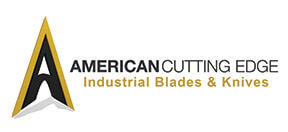Heather Vreeland
-
Razor slitting is a versatile cutting method commonly used for creating slit widths of light gauge films, tapes, ribbons, plastics, and non-woven materials. Choosing the right blade material for your razor slitting application ensures that you achieve maximize runtime and blade life while creating ideal cuts.
While many razor slitting operations employ steel blades, there are distinct advantages to upgrading to a tungsten carbide or zirconia ceramic blade.
Dramatically Increase Wear Life
Both tungsten carbide and zirconia ceramic blades provide significantly improved wear life over carbon steel blades. In fact, operators switching from carbon steel to tungsten carbide or zirconia ceramic can expect wear life to increase by 50 to 500 times.
Slitting operations halt during blade changes, decreasing overall production. Razor slitting blades are extremely
-
Films, vinyl, fabrics, non-wovens, laminates, paper, and heavy film are often manufactured onto large, bulk material rolls. These rolls are too large to utilize in the end product, so the material is converted into smaller rolls for final production using a process called slitting.
During the slitting process, the material on a master or parent roll is unwound and cut into specific widths (slit widths) by traveling through a series of blades. Razor slitting, crush cut slitting, and shear slitting are the three most common types.
Razor Slitting
Razor slitting is easy and inexpensive to set up and is commonly used to convert films, plastics, tapes, ribbons, and vinyl. Using razor slitting, the material can be converted into very narrow slit widths and still produce very little
-
Maintaining high-quality, slitter knives improves both the production output and quality of your slitting processes. When selecting a slitter knife manufacturer, look for one with the experience to evaluate your entire slitting process operation, make recommendations to improve blade lifetime and cut quality, and supply you with slitting knives that meet the unique needs of your business.
Slitter Blade Sharpening
Sharpening your slitter blades allows you to extend the life of your current blades and decrease knife replacement costs. When sharpened by a professional, precision sharpening knife manufacturer, slitting blades are returned to like-new condition at a fraction of the cost of purchasing new knives. All that is required to sharpen slitting blades is to establish a relationship with a precision sharpener,
-
COVID-19's final impact on the world remains to be seen. The ripple effects are being felt at every turn, in every community both on a personal and professional level whether businesses have had to temporarily close during lockdowns or convert production operations to help overcome PPE shortages. While some outcomes such as higher unemployment rates, potential supply chain disruptions, and market volatility are foreseeable, the converting and packaging industries as well as the recycling and sustainability movements are seeing a ripple effect.
Disposable Plastics During the Pandemic
As the long-standing nemesis of the sustainability and zero waste movement, single-use and flexible packaging represent a unique business case as the world faces this unprecedented crisis. Beyond the benefits of convenience that toss
-
Solving Complex Cutting Challenges
As a supplier of industrial knives, American Cutting Edge relies on decades of expertise to solve some of the most complex problems facing our customers.
An in-depth understanding of cutting and engineering combined with our hands-on approach provides our customers with all of the benefits of an on-site engineering team without the overhead.
Here are three stories that demonstrate our ability to bring innovative solutions to our customers’ most pressing needs.
"If you are not taking care of your customer, your competitor will." – Bob Hooey
Translating Needs into Specifications
Recently, a large corporation approached American Cutting Edge with a concern.
The knife used to perforate the bags of their food products was rusting. As a result, the company was changing out knives much sooner than it wanted and was spending too much on blade maintenance.
-
Films, vinyl, fabrics, non-wovens, laminates, paper, and heavy film are often manufactured onto large, bulk material rolls. These rolls are too large to utilize in the end product, so the material is converted into smaller rolls for final production using a process called slitting.
During the slitting process, the material on a master or parent roll is unwound and cut into specific widths (slit widths) by traveling through a series of blades. Razor slitting, crush cut slitting, and shear slitting are the three most common types.
Razor Slitting
Razor slitting is easy and inexpensive to set up and is commonly used to convert films, plastics, tapes, ribbons, and vinyl. Using razor slitting, the material can be converted into very narrow slit widths and still produce very little dust, making it one of the cleanest methods of slitting.
The blades used for razor slitting are inexpensive and require more frequent changes than with other types
-
Optimizing the performance of your converting blades allows you to obtain the longest life, highest quality cuts, and maintain cutting efficiency. Blades that meet the ideal specifications for your converting machine and cutting material provide optimum performance and contribute to increased uptime to ensure the highest outputs.
Changing your current knife selection is not the only way to increase your converting knife performance. Often, the best choice is to upgrade your existing knife to provide better performance, lifetime, and efficiency.
Upgrade Blade Material
Evaluating and adjusting the blade material of your converting knife can dramatically increase the efficiency of your converting machine. If you are experiencing low runtime, low lifetime, or machine inefficiencies, changing to a new blade material may be

